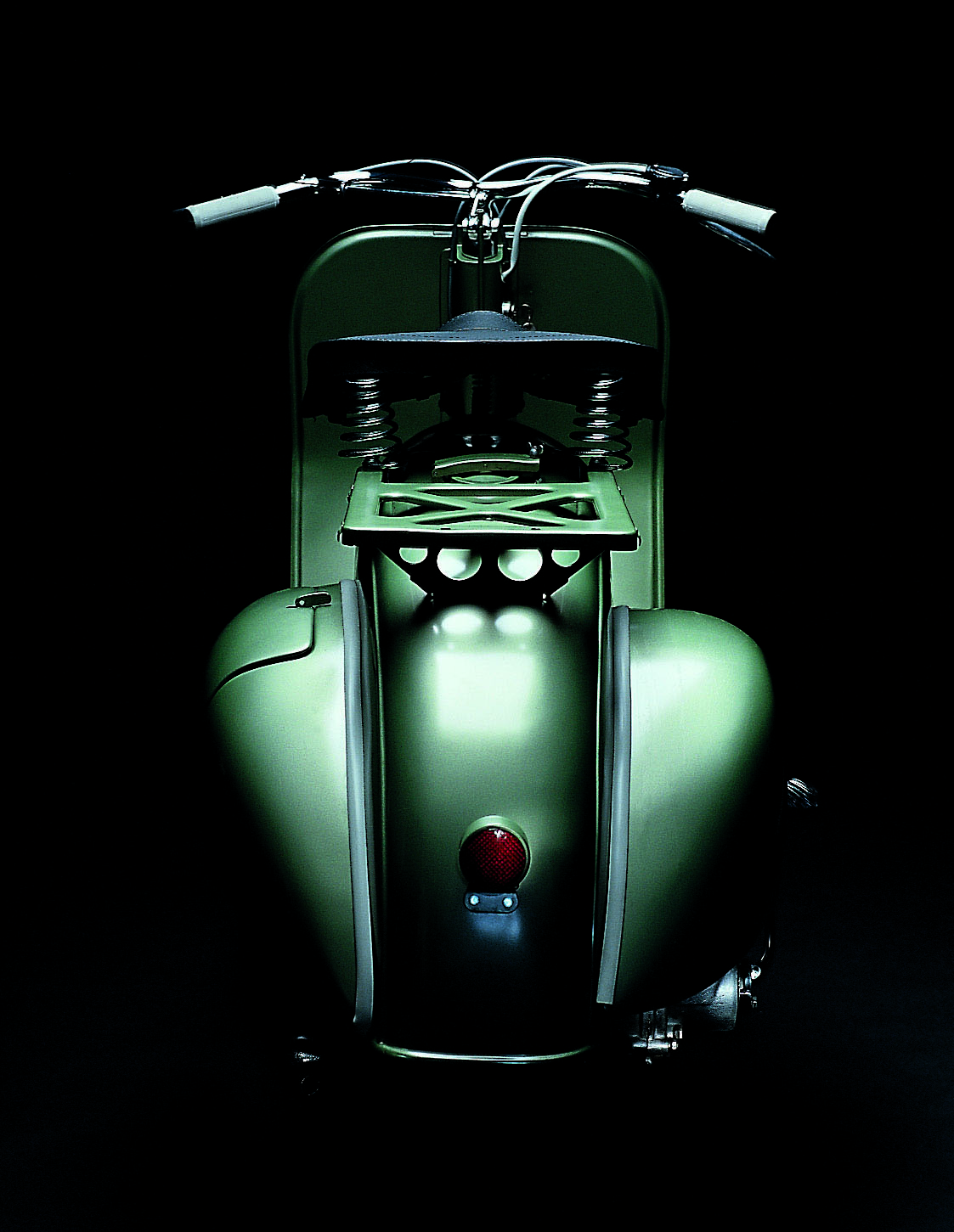The Vespa 125 (and its progenitor, the Vespa 98) was the perfect vehicle in the perfect time. For post-war Italy, it offered a flawless combination of beautiful design, innovative engineering, and one of the best marketing programs the world has ever seen. At a time when fewer than 10 percent of Italian households had the combination of electricity and running water, Italians scraped up every bit of cash they had, and some they didn’t have, just to have the opportunity to get out and about again. Vespa–literally and figuratively–got Italians moving again.
Innovation was everywhere on the Vespa. The front suspension operates like a scale model of an aircraft’s landing gear. The engine and transmission comprise a single unit, without a messy chain to adjust. Both wheels feature lug nuts like those on an automobile, and can be removed in seconds with a single hand-tool. The parcel rack could also be fitted with a spare wheel and tire holder, making a flat a two-minute delay rather than a trip-ending disaster.
By incorporating a cooling fan on the face of the flywheel, and surrounding the engine with an elaborate sheetmetal shroud, D’Ascanio was able to overcome cooling problems inherent in the original Vespa prototypes.
The Vespa 125 (referred to now as Fenderlights to differentiate these bikes from later Vespa 125s with the headlamp in the cast-aluminum headset) offered continuous improvement over the Vespa 98. The original scooter wasn’t fitted with a centerstand. You just rolled up to a curb and propped the floorboard up against it. The 125 included a stand after 1949 so you could park it anywhere.
The gearchange was moved to the left side, where it would stay as long as Vespas made shiftable scooters.
The 1949 version of the Vespa 125 had a new designed horizontal fins to promote better cooling. A key lock is also introduced as is a stand.
In 1950 a new TA 17B carburettor is added and a new muffler with removable terminal.. V15T headlight is made so that it is adjustable.


